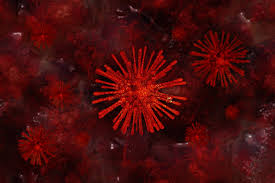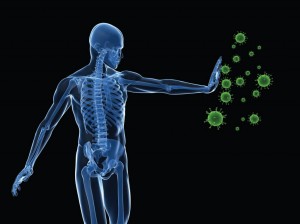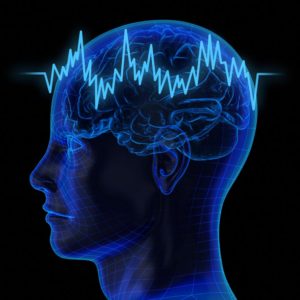Following a concerted H1N1 vaccination campaign throughout Europe in 2009, children immunized with GlaxoSmithKline’s Pandemrix vaccine, but not Novartis’s Focetria, were at an increased risk of developing narcolepsy. In support of an autoimmune hypothesis about the connection between the chronic sleep disorder and the vaccine, Stanford neurologist and immunologist Lawrence Steinman, rheumatologist Sohail Ahmed, formerly of Novartis Vaccines in Italy, and their colleagues identified an influenza peptide that resembled a brain receptor peptide found in higher abundance in Pandemrix than in Focetria.
The peptide, from a portion of the influenza virus nucleoprotein A that is exposed on the protein’s surface, turns out to have homology to a surface-exposed peptide in a human receptor that normally binds hypocretin, the hormone that helps keep people awake. The researchers also found more antibodies that bound both the peptide and the hypocretin receptor in the blood of patients who were vaccinated with Pandemrix than in the blood of Focetria-vaccinated individuals. The results suggest that the vaccine may trigger an autoimmune reaction that leads to narcolepsy, but concrete evidence of a vaccine-narcolepsy connection remains to be found. The results are published today (July 1) in Science Translational Medicine.
That exposure to influenza virus nucleoprotein either from the Pandemrix vaccine or a flu infection results in the production of antibodies that facilitate the onset of narcolepsy is an interesting hypothesis, but still needs to be proven, said Thomas Scammell, a neurologist at Harvard Medical School in Boston, Massachusetts, who was not involved in the research.
The link between flu vaccines and narcolepsy extends beyond Pandemrix and the 2009 H1N1 pandemic. A prior study by Emmanuel Mignot at Stanford University School of Medicine and colleagues found cyclical spikes in incidents of narcolepsy in China following flu seasons. The working hypothesis of some narcolepsy researchers, including Mignot, is that a component of either the H1N1 vaccine or the virus itself causes the body’s immune cells to start attacking its own hypocretin pathway. In 2013, Mignot’s group identified evidence to support this idea when the team found a specific group of T-cells that react to hypocretin. But the researchers voluntarily retracted the publication last year after they could not replicate the work.
In the current research, Ahmed, currently global head of clinical sciences at GSK, Steinman, and their colleagues implicate antibodies part of the body’s humoral immune response, as opposed to its cellular immune fighters as a potential culprit. The researchers first compared the sequences of influenza proteins likely to be found in the vaccines with hypocretin and its receptors. The influenza nucleoprotein had high similarity with a portion of the human hypocretin receptor 2, which binds hypocretin in the brain to ward off sleep. Measuring the amount of nucleoprotein in 11 different flu vaccines, the researchers found that the flu nucleoprotein peptide was present in higher amounts in Pandemrix than Forceria and the others.
Testing the blood of 17 of 20 patients who were vaccinated with Pandemrix and who subsequently developed narcolepsy, the researchers found antibodies that recognized the influenza nucleoprotein as well as the hypocretin receptor, binding to human cell lines expressing the receptor. None of the six samples from individuals vaccinated with Focetria had these antibodies.
The antibodies were, however, also present in five of 20 blood samples from patients who were infected with swine flu in 2009, suggesting that it could be the virus itself, rather than the vaccine, that triggers their production. Moreover, some of the patients whose blood samples tested positive for the antibodies had never gotten narcolepsy, suggesting that antibodies may not be specifically targeting the hypocretin receptor. Rather, the presence of the antibody may be a result of narcolepsy a non-specific reaction to the hypocretin neuron loss, suggested Scammell.
Another wrinkle in the hypothesis that the antibody causes narcolepsy is that these receptors are also abundant in another type of neuron, stimulated by histamine, but these neurons do not appear to be damaged in other hypothalamus regions of narcolepsy patients, said Mignot.
“I think the field is wide open at this point,” said Scammell.
Steinman agrees there is still much to explore. “The study shows that having the antibody may be part of the pathophysiology but by itself is not sufficient to result in clinical narcolepsy.”







